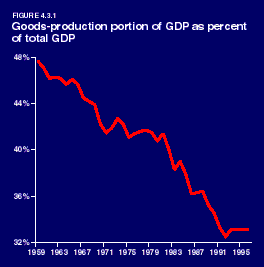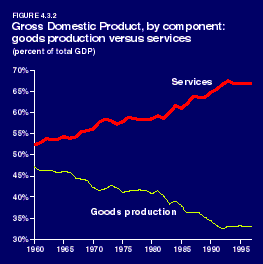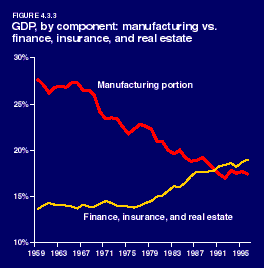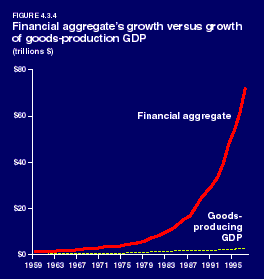FIGURE 4:
The failure of post-1971 economic policymaking
The charts in Figure 4 show three series, for comparison.
In Series 1 (Figures 4.1.1-4.1.6) you see the cancerous growth-rate of financial turnover in the United States, in the period 1971-1973 to the present. Indicative sub-categories of turnover are shown, of money flows into mergers and acquisitions, money flows into futures speculation on interest rates, on currencies and equity indices, and so forth. Overall in the United States, valuations of stocks, debts, and especially, since the mid-1980s, derivatives, have grown at hyperbolic rates. Worldwide speculation in derivatives shows the same cancerous growth rate.
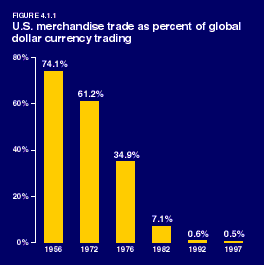
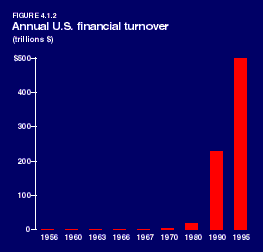
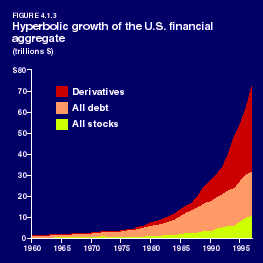
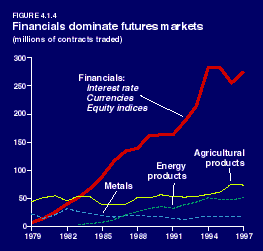
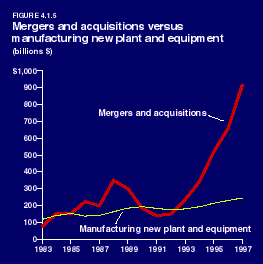
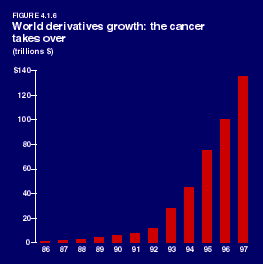
Series 2 (Figures 4.2.1-4.2.5) shows the decline in money flows into investments into basic production sectors of all kinds in the U.S. economy, over the same time period that, in contrast, financial speculative turnover ballooned. Also shown, is the related decline in proportion of the U.S. workforce engaged in essential activity in these sectors. The percentage of workers (as a share of all operatives), and the percentage of investment (as a percent of the Gross Domestic Product) have declined over the period from 1971-1973 to the present, for manufacturing, agriculture, basic physical infrastructure (water, power, transportation, etc.), construction, and related categories of activity. This does not reflect increased productivity; just the opposite. The declining productive investment and employment show up as declining rates of production and consumption levels per household in recent decades. The final graph of this series, illustrates one aspect of this devolution of the economy, in terms of the deteriorating condition of an average household. In the 1960s, the pay-check of the principal wage-earner, would cover the four basics shown (home, car, food, health care), with money remaining for other essentials; at the same time, households were productively engaged in the economy. Today, households can no longer exist on the pay-check of the principal wage-earner--typified by the recourse of family members to hold, among them, several jobs per household. At the same time, the numbers of jobs in non-productive activities in the economy have proliferated--typified by casino employment, part-time fast-food jobs, and all kinds of non-essential services.
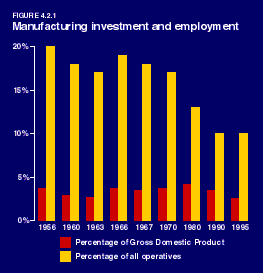
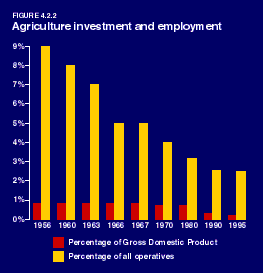
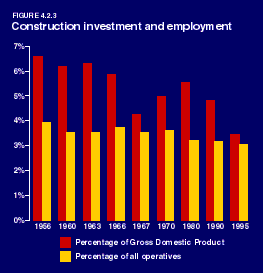
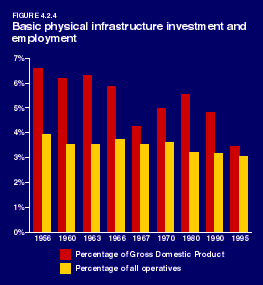

In Series 3 (Figures 4.3.1-4.3.4), you see the deteriorating composition of U.S. national product, in terms of even such a crude measure as Gross Domestic Product. It is obvious how the value is dropping in the period 1971-1973 to the present, of the component of GDP related to manufacturing and goods production, relative to the rise in value of financial, insurance, real estate, and related non-productive services.--Marcia Merry Baker
